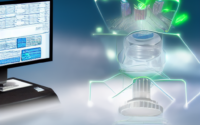Green tech: Innovations in renewable energy
Green tech: Innovations in renewable energy
Solar Power Innovations:
Solar power is one of the most popular forms of renewable energy, and recent innovations have made it even more efficient and affordable. One of the key developments in solar technology is the use of perovskite solar cells. These cells are cheaper to produce than traditional silicon solar cells and have the potential to offer higher efficiency levels. Additionally, solar panels are becoming more flexible and lightweight, allowing for easier integration into various surfaces and structures. Another exciting innovation is the growth of solar farms and community solar projects, which enable more people to access and benefit from solar energy.
Wind Power Advancements:
Wind power is another important source of renewable energy, and advancements in wind turbine technology have significantly increased efficiency and output. One notable innovation is the development of larger and more powerful offshore wind turbines. These turbines can capture more energy from stronger offshore winds, making them an ideal choice for coastal areas. Additionally, smart wind turbines equipped with sensors and data analytics can adjust rotor angles and blade positions in real-time to optimize energy production. This technology helps to maximize energy output while minimizing maintenance costs.
Energy Storage Solutions:
Energy storage is a crucial component of a sustainable energy system, as it allows for the capture and use of renewable energy when it is most needed. Lithium-ion batteries are commonly used for energy storage, but new developments in battery technology are making storage solutions more efficient and affordable. For example, solid-state batteries offer higher energy density and longer lifespan compared to traditional lithium-ion batteries. Pumped hydro storage and thermal energy storage are also viable options for storing excess energy generated from renewable sources for later use when demand is high.
Smart Grid Technologies:
Smart grid technologies play a key role in integrating renewable energy sources into the existing power grid. These technologies enable better communication and coordination between power suppliers, consumers, and grid operators, leading to more efficient energy distribution and consumption. Smart meters and sensors provide real-time data on energy usage, allowing consumers to adjust their consumption patterns to optimize efficiency and cost savings. Additionally, advanced grid management systems can balance the supply and demand of electricity more effectively, reducing the reliance on fossil fuel-powered generators during peak demand periods.
Hydropower Innovations:
Hydropower has long been a reliable source of renewable energy, and recent innovations have improved its sustainability and environmental impact. One innovation is the development of low-impact hydropower technologies that minimize disruption to aquatic ecosystems and local communities. Run-of-river hydropower systems, which generate electricity without the need for large dams or reservoirs, are gaining popularity as a more environmentally friendly hydropower option. Additionally, advancements in turbine design and fish-friendly technologies help mitigate the environmental impact of traditional hydropower plants.
Bioenergy Developments:
Bioenergy, derived from organic materials such as crops, agricultural waste, and forest residues, is another important form of renewable energy. Advances in bioenergy technologies have led to the development of more efficient biofuels and biogas production methods. Biofuels such as ethanol and biodiesel are increasingly used as transportation fuels, helping to reduce greenhouse gas emissions from the transportation sector. Biogas production from organic waste materials provides a sustainable way to generate electricity and heat while also reducing methane emissions from landfills.

